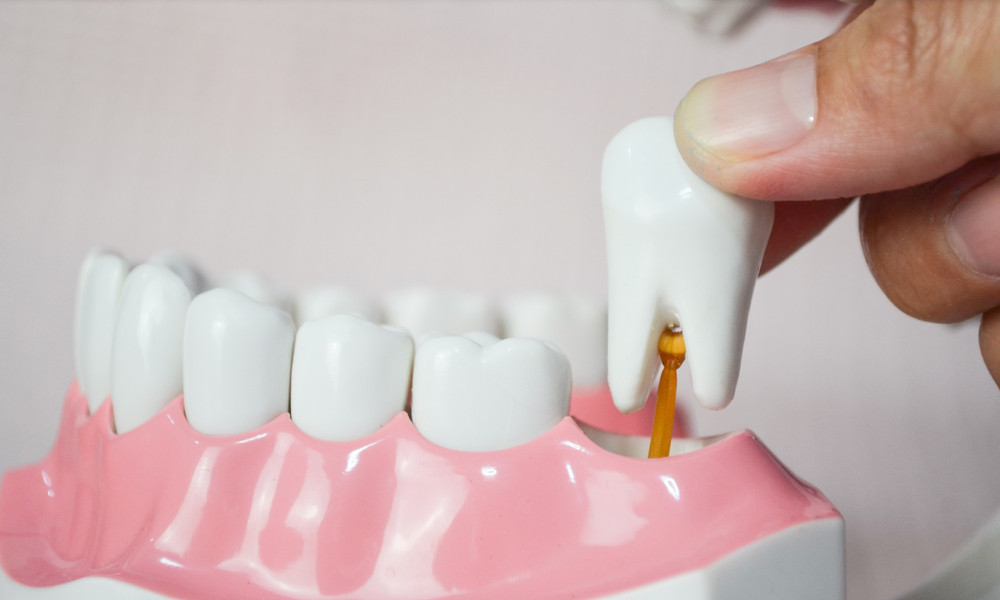
Tooth extraction may seem daunting, but understanding the process can ease your concerns. We’ll explain why it’s necessary, the types of extractions, and recovery tips to make it less confusing.
Definition and Overview
Tooth extraction, or tooth removal, is sometimes necessary for good oral health. Common reasons include severe tooth decay, injury, wisdom tooth removal, advanced periodontal disease, or preparation for orthodontic treatment. Your dentist will discuss the need for extraction, explain the procedure, and address any questions you have before proceeding.
The Importance of Tooth Extraction in Dental Health
Maintaining good dental health is crucial for overall well-being. Tooth extraction is sometimes necessary to prevent the spread of infection and alleviate dental pain. Removing a damaged or impacted tooth can also aid in orthodontic treatment and improve overall oral health.
Preparation for Tooth Extraction
To prepare for a smooth tooth extraction process and recovery, discuss your medical history with your dentist. Plan for post-procedure care and address any questions or concerns with your dental professional. Follow these steps to feel informed and ready for a successful extraction.
Steps to Prepare at Home
Preparing for a tooth extraction at home can ease the process and reduce potential issues. Here’s a checklist to help you prepare:
- Share your medical history with your dentist: Inform them about medical conditions, allergies, medications (including over-the-counter), and recent illnesses.
- Inform them about blood thinners: Let your dentist know about any anticoagulants to prevent excessive bleeding. They may need to adjust your medications before the extraction.
- Arrange transportation: If sedation or general anesthesia is involved, ensure you have someone to drive you back home after the procedure.
- Stock up on soft foods: Foods like yogurt, applesauce, mashed potatoes, and smoothies will be ideal during the recovery period.
By following these steps, you’ll be well-prepared for your appointment.
What to Expect During Your Visit to the Dentist in Fort Collins
Before your tooth extraction, the team at Holmes Dental will guide you through pre-procedure steps and review your medical history. Local anesthesia will numb the area around the tooth for comfort. Your dentist may discuss sedation options for relaxation. During extraction, you may feel pressure but not pain.
The Tooth Extraction Procedure Explained
Exploring the tooth extraction process: There are two types – simple and surgical extractions, based on the tooth’s location and condition. The dentist will assess your case, recommend the suitable option, explain each step, and address any questions or concerns you may have.
Types of Tooth Extractions – Simple vs. Surgical
Understanding the difference between simple and surgical tooth extractions is crucial. A simple extraction is performed by a general dentist on a visible tooth using local anesthesia. On the other hand, surgical extractions, done by oral surgeons, involve more complex cases like impacted or broken teeth. See the summary table below:
| Feature | Simple Extraction | Surgical Extraction |
| Tooth Position | Visible above gum line | Not fully erupted, broken below gum line, or impacted |
| Performed by | General Dentist | Oral Surgeon |
| Anesthesia | Local Anesthesia | Local anesthesia, sedation, or general anesthesia |
| Procedure Complexity | Less complex | More complex |
Step-by-Step Guide to the Extraction Process
Once numb from the local anesthetic, your dentist will use an elevator to loosen the tooth from its ligaments. Cracking sounds are normal. The tooth is then gently removed using forceps to minimize stress on surrounding gum tissue. The extraction site is cleaned, and gauze may be applied to aid healing and reduce bleeding.
Managing Pain and Anxiety
Dental visits can cause anxiety for some people, even during routine check-ups. Your comfort is a priority for the dental team, from the moment you arrive to the care you receive.
Local Anesthesia and Sedation Options
Local anesthesia and sedation are crucial for ensuring a comfortable tooth extraction. Your oral surgeon will determine the necessary approach and type of anesthesia based on the complexity of the extraction and your individual needs. Local anesthesia numbs the extraction area, while sedation promotes calmness throughout the procedure. Rely on your oral health provider’s expertise to recommend the most suitable anesthesia for a seamless experience.
Tips for a Comfortable Experience
After tooth extraction, follow these steps to relax and reduce discomfort:
- Communicate openly with your dentist if anxious.
- Follow post-extraction instructions carefully.
- Bite gently on a piece of gauze to control bleeding.
- Use ice to reduce swelling.
- Take prescribed pain relievers.
- Rest, hydrate, and avoid straws, smoking, or vigorous mouth rinsing for 24 hours to aid healing.
Aftercare and Recovery
The key to recovering from a tooth extraction is diligent aftercare. Follow your dentist’s advice to heal properly, minimize the risk of infection, and resume your routine smoothly. Discomfort, swelling, or minor bleeding are common initially but typically subside within a few days.
Immediate Post-Extraction Care
After a tooth extraction, your mouth will be numb from anesthesia. Care for the extraction site while the blood clot forms is crucial. Bite down on a piece of gauze for about an hour to stop bleeding. Avoid rinsing, spitting, or using a straw initially to prevent dry socket. Once the bleeding stops, remove the gauze and start with clear liquids and soft foods, chewing on the opposite side of the extraction site.
Long-Term Healing and Care Tips
After an extraction, maintain good oral hygiene to prevent infections. Start gentle brushing and flossing after 24 hours. Your dentist may recommend a saltwater rinse for healing. Stick to soft foods initially and gradually reintroduce solid foods. Expect mild pain and swelling; use pain relievers as directed by your dentist. Contact your dentist if you experience severe pain, ongoing bleeding, or signs of infection.
Schedule Your Appointment
If you think you may need a tooth extracted, don’t wait for the problem to get worse. Contact Holmes Dental by phone or online to set up an appointment. Our team will work with you to determine the best course of action and craft a treatment plan that meets your needs.

 Dan Holmes, DDS
Dan Holmes, DDS Nicole Holmes, DDS
Nicole Holmes, DDS Our Team
Our Team




